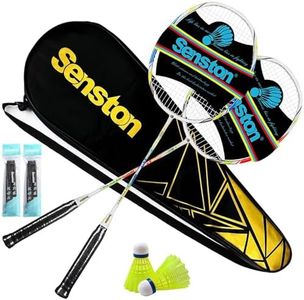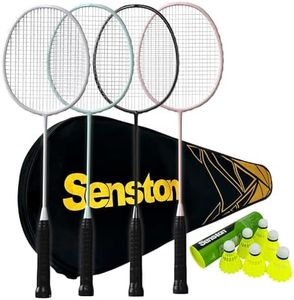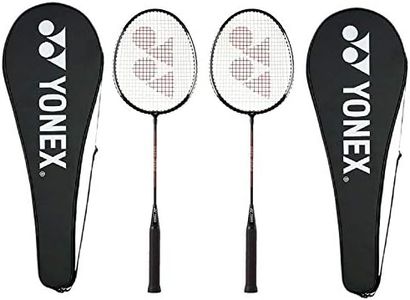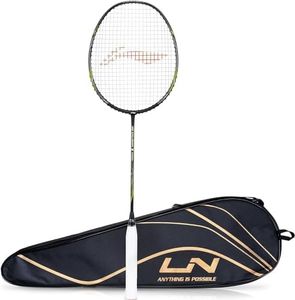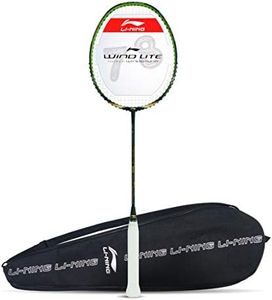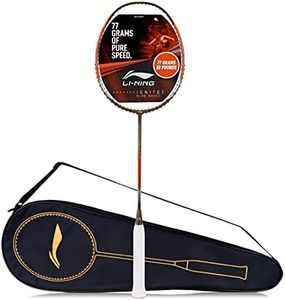We Use CookiesWe use cookies to enhance the security, performance,
functionality and for analytical and promotional activities. By continuing to browse this site you
are agreeing to our privacy policy
10 Best Badminton Rackets
From leading brands and best sellers available on the web.Buying Guide for the Best Badminton Rackets
Choosing the right badminton racket can make a big difference in your gameplay, comfort, and performance. When picking a racket, it's important to consider your skill level, playing style, and what feels right in your hands. Understanding the main features of a racket will help you make an informed decision that aligns with your needs.WeightThe weight of a badminton racket is important because it affects your swing speed, control, and power. Rackets generally fall into three categories: lightweight (about 80-85 grams), medium (85-90 grams), and heavy (90-95 grams and above). Lightweight rackets are easier to handle, faster to maneuver, and are good for beginners or players who value quick reactions. Medium-weight rackets offer a balance between power and speed, making them a safe choice for developing players. Heavier rackets deliver more power with each shot but require more strength and can be tiring for long matches. You should choose the weight that feels comfortable and allows you to play effectively without straining.
BalanceBalance refers to how the weight is distributed in the racket, which can be head-heavy, head-light, or evenly balanced. Head-heavy rackets provide more power due to extra mass in the head, making them suitable for attacking players who love smashing. Head-light rackets are easier to control and maneuver, great for defensive play or doubles. Evenly balanced rackets offer a mix of both worlds, making them versatile for most play styles. Pick a balance that supports how you like to play and what shots you use most often.
FlexibilityFlexibility refers to how much the shaft of the racket bends during play. Rackets can be flexible, medium, or stiff. Flexible shafts generate more power with less effort, helping beginners or those with slower swings. Stiff shafts are preferred by experienced players who have fast swings and want more control and accuracy. Medium flexibility offers a balance suitable for many intermediate players. Choose flexibility based on your playing level and whether you prioritize power (flexible) or control (stiff).
Grip SizeGrip size is about the thickness of the racket handle, which should fit comfortably in your hand. A handle that's too big or too small can lead to discomfort or poor control. Grips are usually sized from small to large. Smaller grips allow for faster, more precise wrist movements, while larger grips give a more secure feel for powerful shots. You can test grip sizes by holding the racket and checking if you can comfortably wrap your fingers around the handle. Pick the size that feels stable and natural in your hand.
MaterialRackets are made from different materials such as aluminum, steel, graphite, or carbon fiber. Aluminum and steel rackets are often heavier and more affordable, which can be suitable for beginners or casual play. Graphite and carbon fiber rackets are lighter, stronger, and usually used by serious or advanced players for better performance. Your choice should depend on how often you play and what feels comfortable—lighter and stronger materials are best for regular or competitive players, while heavier materials are fine for occasional use.
String TensionString tension affects the power and control of your shots. Lower tension (about 18-22 lbs) creates a larger sweet spot and more power, forgiving off-center hits, which is ideal for beginners. Higher tension (23-30 lbs or more) offers more control and accuracy but less power unless you have advanced technique; it's preferred by experienced players. Think about your skill level and whether you need more help with power (lower tension) or want sharper control (higher tension).
